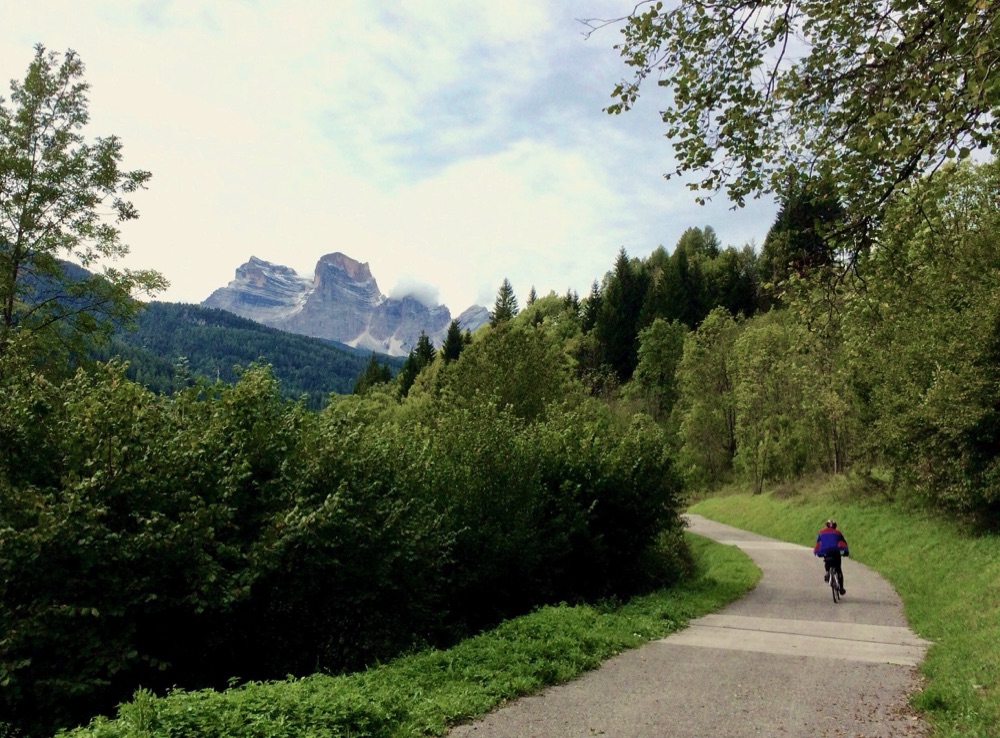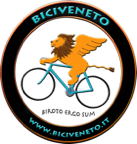• I prefer aluminum or stainless steel water bottle cages, after having had a couple of the composite (plastic) ones crack, one of them on a touring ride far from home.
• When you're going minimalist, you need pretty much the same clothing and gear whether you go away overnight or for a week.
• When you arrive at your lodgings, you'll need a way to carry your clothes, toiletries, and other necessities to your room. (It's too much trouble to
remove bikepacking bags, and they don't have carrying handles besides). For this purpose an ultralight backpack that packs down to the size of a
tennis ball is ideal. It can also come in handy if you want to take a short hike or stroll in the area where you're spending the night.
• Make sure your B&B or hotel has a safe space to stash your bike for the night.
• Make sure there's a place to eat within walking distance of where you're thinking of spending the night. A hotel garni is one without a restaurant.
• Don't forget the charging cables for each of your devices: cell phone, GPS, GoPro, head and tallights (and watch?). A compact multi-charger will not
only let you leave the bulky charging blocks at home, but also lets you charge several devices at the same time and from one outlet (which sometimes could be all that's available).
• A power bank (portable charger) will come to the rescue and keep your lights, phone, and GPS working.
• B&Bs and agritours, as a rule, cannot accept credit or debit cards. ATMs are abundant.
• Even if you have a GPS bike computer, or phone, loaded with maps and routes, it's a good idea to have a backup. The maps.me app on my iPhone has saved me on many a ride, hike, and drive. It works off your phone's GPS and does not require an internet connection. You can download whatever maps you need (I have maps of all 7 provinces in the Veneto Region, and the 2 in the Trentino-Alto Adige). They even show walking trails and lesser known bike paths. I also love paper maps and have a large collection of compact, easy to-carry, Zanetti 1:30,000 maps of various local areas.
• If you're thinking of bringing a camera along, this bag will protect it without adding weight or bulk. I have used it mostly for hiking, but
also safely carried my Panasonic Lumix camera to a Giro stage in my bikepacking seat bag.
• If you'll be riding in the mountains, be sure to check the local weather first, and keep in mind that it may change from hour to hour, and from valley to valley.
• Evening comes early to mountain valleys. Not only is there less light, but temperatures drop, and even in summer it's best to have a warm layer or
two for apres-ride activities. I've found myself heading for a trattoria in a midweight wool zip t-neck, a tech flannel hiking shirt, and a lightweight
puffer jacket...in August! Early mornings can be chilly too, so arm and knee warmers and a lined vest will keep you warm. Always take a jacket.
• Other items I've found useful:
nitrile or latex gloves, for greasy jobs like removing your rear wheel
tough paper towels for multiple uses, from bike cleaning to serving as a washcloth. The Italian brand I use is Tutto Pannocarta.
a mini folding blanket for a picnic by a river (or even an extra layer under your jersey). It comes in a larger version as well.
a tiny microfiber pack towel (it too comes in a larger version).
flat toiletry packs for soap/shampoo, sunscreen, and detergent for washing your kit .
a very small LED flashlight
Stasher bags for snacks
"When you come to a fork in the road, take it" - Yogi Berra

• A seat bag should be your first purchase, and a top tube bag is highly
recommended. (Beware: too-wide top tube bags can rub your knees when you
stand on the pedals). A handlebar bag is useful, but you can make do with a
lightweight backpack or drybag if you don't want to invest a lot in equipment.
(You could perhaps even strap the backpack to your handlebars). There are
bags to fit virtually any open space on a bike. The water bottle cage on the
seat tube can be used to hold a carry-all container.
• No matter how capacious your seat bag is, it does have a limit, and you will
find that just one more thing, no matter how small, cannot be squeezed into it!

